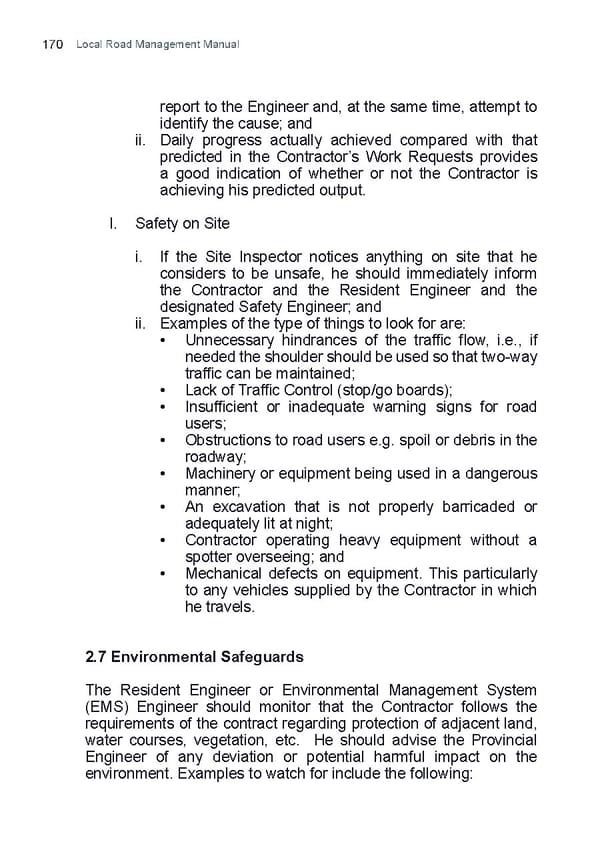Local Road Management Manual 170 report to the Engineer and, at the same time, attempt to identify the cause; and ii. Daily progress actually achieved compared with that predicted in the Contractor’s Work Requests provides a good indication of whether or not the Contractor is achieving his predicted output. l. Safety on Site i. If the Site Inspector notices anything on site that he considers to be unsafe, he should immediately inform the Contractor and the Resident Engineer and the designated Safety Engineer; and ii. Examples of the type of things to look for are: • Unnecessary hindrances of the traffic flow, i.e., if needed the shoulder should be used so that two-way traffic can be maintained; • Lack of Traffic Control (stop/go boards); • Insufficient or inadequate warning signs for road users; • Obstructions to road users e.g. spoil or debris in the roadway; • Machinery or equipment being used in a dangerous manner; • An excavation that is not properly barricaded or adequately lit at night; • Contractor operating heavy equipment without a spotter overseeing; and • Mechanical defects on equipment. This particularly to any vehicles supplied by the Contractor in which he travels. 2.7 Environmental Safeguards The Resident Engineer or Environmental Management System (EMS) Engineer should monitor that the Contractor follows the requirements of the contract regarding protection of adjacent land, water courses, vegetation, etc. He should advise the Provincial Engineer of any deviation or potential harmful impact on the environment. Examples to watch for include the following:
 Local Road Management Manual Page 170 Page 172
Local Road Management Manual Page 170 Page 172